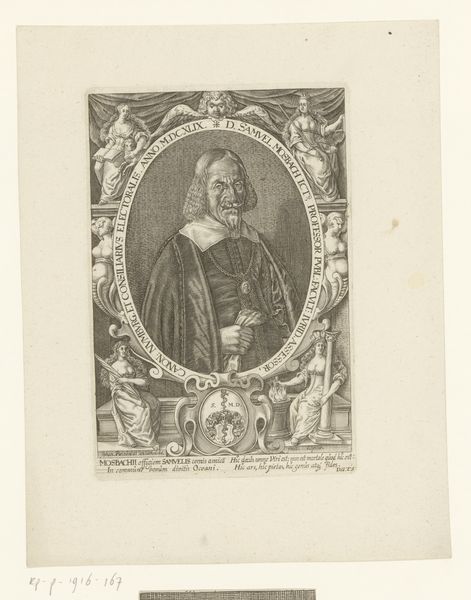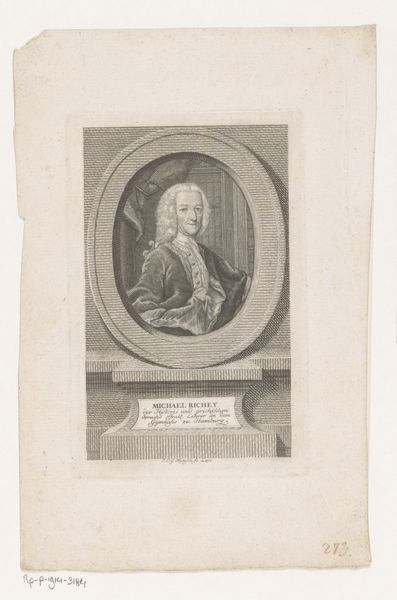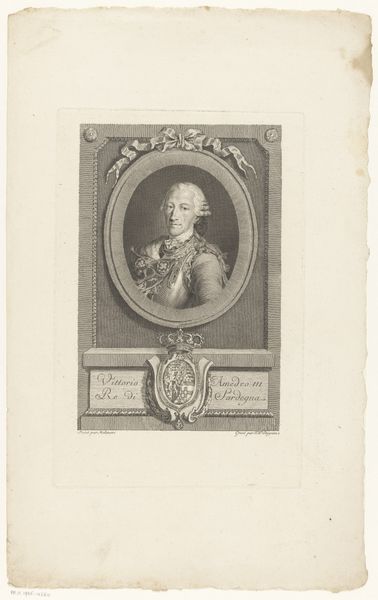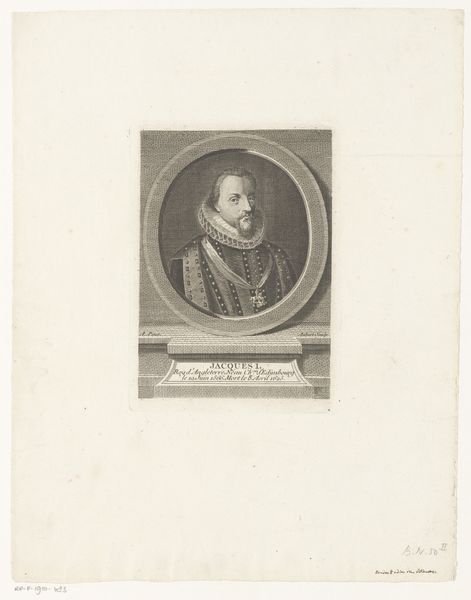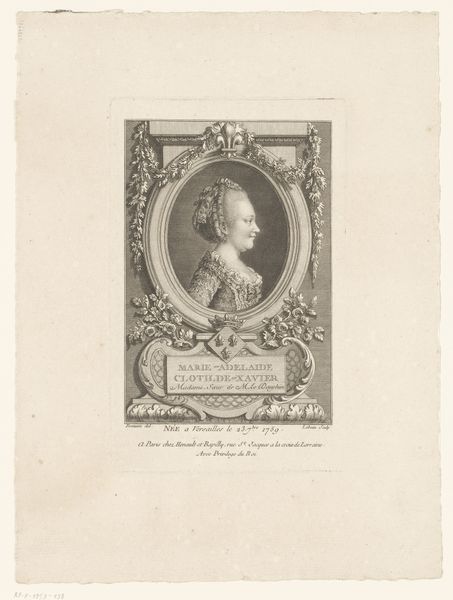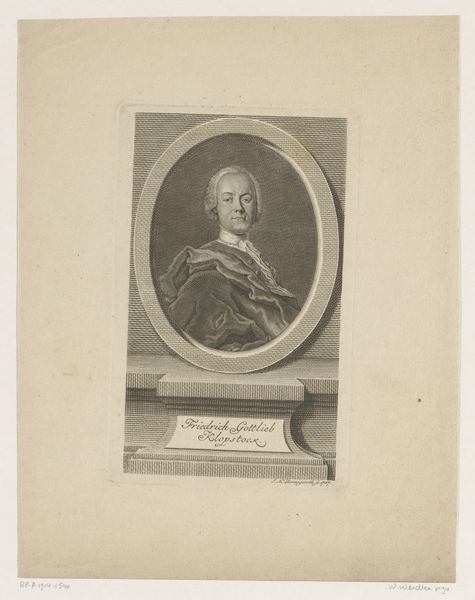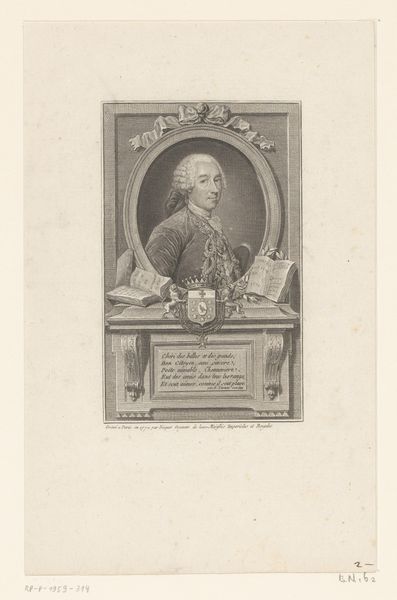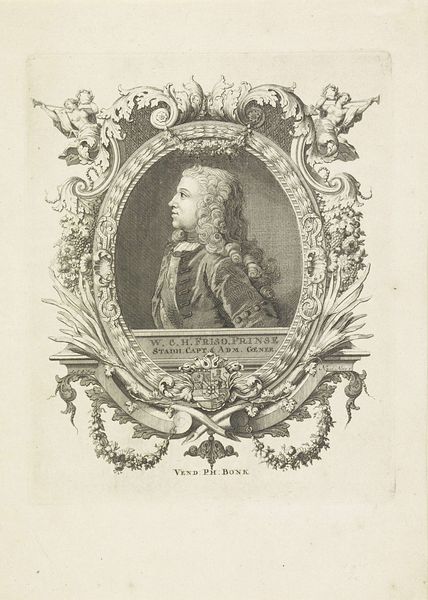
print, intaglio, paper, engraving
#
baroque
# print
#
intaglio
#
paper
#
history-painting
#
engraving
Dimensions: 209 mm (height) x 163 mm (width) (plademaal)
Editor: So, this intaglio print from 1648 is titled "Hans Krabbe til Søgård. Fra en ligprædiken 1648," created by Hans Andreas Greys. It's quite intricate! All those family crests framing the portrait... I find it fascinating and almost a little intimidating in its formality. What strikes you about it? Curator: It immediately reads as a piece deeply embedded in its social and historical context. We have a portrait surrounded by heraldry, signifying lineage and power. Prints like this were not simply aesthetic objects. They functioned as social documents, circulating specific messages about status, inheritance, and dynastic connections. Editor: How would this have been viewed at the time, beyond just a portrait? Curator: It was likely part of a funeral oration, indicated by the title. These "ligprædiken" prints served to memorialize the deceased but also, crucially, to reinforce the family’s position in society. The sheer number of coats of arms declares loudly about the individual's ancestry and importance. This piece tells a story about inherited power during a very particular time in Denmark's history. Consider who controlled the narrative, the visual vocabulary. Does the choice of intaglio strike you as significant? Editor: I guess intaglio would have allowed for incredibly detailed lines and imagery that someone like Greys would have wanted when rendering these crests. That’s the story being told here, as much as Krabbe's face, isn’t it? Curator: Precisely! These images shaped how individuals, especially those with power, were publicly remembered. It begs questions: who commissioned this? How were these prints distributed, and what did the image's circulation achieve? These details show how art acted within systems of power and public memory. Editor: I'd only focused on the craftsmanship at first, but understanding its function as a historical and social marker changes everything. Thanks! Curator: It's rewarding to see how our perceptions shift when we consider art's broader socio-political role!
Comments
No comments
Be the first to comment and join the conversation on the ultimate creative platform.

